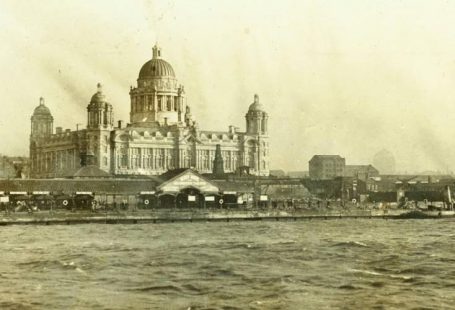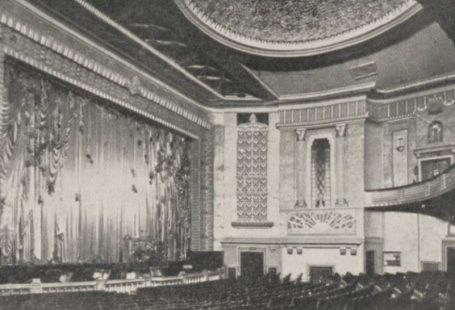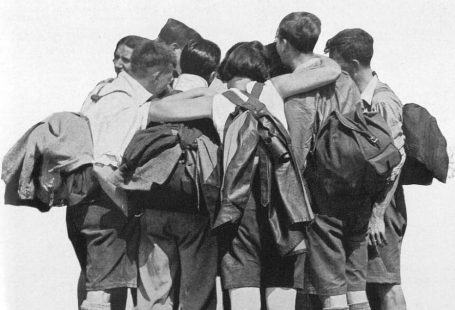‘They name their dresses Tango, their hats Tango, their dogs Tango,’ so reports the Pall Mall Gazette in 1913 at the height of tango fever in London and in Paris.
In this special blog, using articles and illustrations from The Archive, we explore the history of the tango, and how its popularity surged after its spread from along the Rio de la Plata in South America to the music halls, the stately homes and the dance floors of Europe.
Origins of the Tango
Originating in 1880s Argentina and Uruguay, alongside the banks of the Rio de la Plata, the tango was a heady mix of dances influenced by the European emigrant population (including the waltz, polka, and mazurka) and the slave population (the habanera, the African candombe and the Argentine milonga). Associated with port brothels and gauchos, the dance seemed unlikely to impress the more prudish tastes of Europe and North America.
‘El Tango Tragico’ perfromed by Marjorie Moss and Georges Fontana | The Bystander | 23 July 1924
But impress it did. In a post-war retrospect on dance in all its forms, C Patrick Thompson in Britannia and Eve describes how George Grossmith and Phyllis Dare danced the tango at a Gaiety showing of The Sunshine Girl in 1912. The New York production of the musical comedy, like its London counterpart, saw the tango being ‘the hit of the show.’
The tango had made the leap from Argentina and Uruguay as musicians and dancers travelled across the world, and before too long, it had been picked up by theatres and soon ‘everybody was doing it.’
Everybody’s Doing It
The Illustrated London News in May 1913 reports on a new craze in Paris – namely, the tango. The inhabitants of the city ‘had taken enthusiastically to the tango, and tango teas were very much in fashion.’
A tango tea in Paris | Illustrated London News | 17 May 1913
The Pall Mall Gazette, several months later, goes into further detail about these Parisian tango teas:
Tango teas in Paris vary in degree of smartness and seemliness according to the milieu in which they are danced, and as they are danced in all milieux there are many varieties. Last season it was the fashion to invite one’s friends for tea and a tango lesson; this season so many people will have passed the learning stage that there will not be so much need for the professors.
A tango tea in a German restaurant | Illustrated London News | 28 February 1914
According to the same article, Parisian women ‘will turn their houses inside out at all odd moments of the day [to] practice its various steps and convolutions.’
So the famously more liberal capital of Paris was transfixed by the tango, but would London follow suit?
You Made Me Tango
‘You made me tango; I didn’t want to do it,’ was the song on everybody’s lips in London according to The Tatler in November 1913. The tango had turned Londoners’ ‘notions of ballroom upside down,’ was being ‘entertained at tea and supper in quite a number of big private houses and certainly all the recherché restaurants in town.’
Steps from the tango | The Tatler | 17 November 1913
Indeed, the above ditty sums up British attitudes to the tango quite neatly. At its arrival, ‘critics were either scorned or shocked. They condemned Miss Tango either as a dismal failure or as a brazen hussy.’ But the tango won through despite the detractors, The Tatler noting it to be ‘one of the most graceful of dances…and as for the suggestion of ‘naughtiness’ Mrs Grundy has really no need to concern herself.’
Have a Tango Half-Hour
Soon, the tango was everywhere. The Illustrated London News carries an advert from His Master’s Voice (better known as HMV) for tango records – as the ‘papers are full of Tangoists.’ The advert claims that the ‘finest way to learn the tango’ is by buying their selection of tango records, and as if anybody needed further convincing, an HMV dealer would be keen to play ‘dazzling’ tango music to any interested parties for at least an half hour.
Illustrated London News | 25 October 1913
The Tango Touch
Not only did the tango craze impact music, as one might expect, it also influenced exercise and fashion. A set of photographs in The Sketch demonstrates exercises necessary for tango training, including such moves as circular leg swinging, back kicking and balancing a book on the head.
Fashion was perhaps the most impacted by tango fever. The Bystander, 8 October 1913, reveals the ‘tango note in hat-wear:’
At the moment the note is one of a somewhat fantastic raffishness, of Maenadic boldness, unexpected angles, and simple grace – the note, in fact, of the Tango and of the slit skirt, which owes its birth to the craze of the hour.
The Bystander | 8 October 1913
And of course – the tango dress, like this one as seen in the Pall Mall Gazette.
Pall Mall Gazette | 7 November 1913
This dress is fashioned from bishop sleeves, made from transparent fabric, and is constructed from two tiers, the second one in lace. The main part of the dress is in a ‘supple charmeuse of the palest yellow,’ with an accompanying belt of a soft, deep, blue.
Not all designs were quite as becoming, such as these trousers and knickerbockers featured in The Sketch, which the publication itself deems ‘freakish.’
Alas, like all crazes, the popularity of the tango did not last – with the foxtrot waiting in the wings to take its place. However, the dance itself endured – surviving in many different formats including the ballroom tango and the Argentine tango, and is, as it was in 1913, danced across the world.














